How Do I Save Time And Money In The Kitchen
This post may contain affiliate links which might earn us money. Please read my Disclosure and Privacy policies hereSaving time and money in the kitchen is a goal that many people strive for. You can make the most of your time and budget by implementing smart strategies and adjusting your cooking routine while still preparing delicious and nutritious meals.
Let me share with you some practical tips and ideas to help you save time and money in the kitchen.
Let's dive in!
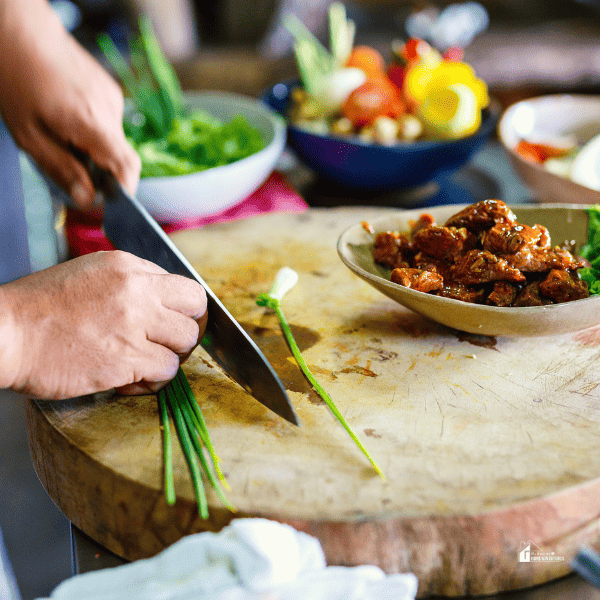
Saving Time and Money in the Kitchen
One of the most effective ways to save time and money in the kitchen is by organizing and planning your meals. Meal planning allows you to make a list of the ingredients you need and prepare what will be consumed during the week in advance.
This helps you use up what you've already bought and reduces the need for impromptu grocery shopping trips and take-out meals, saving you both time and money. Also, meal planning ensures you eat various foods, promoting a healthy and balanced diet.
Organizing your products and ingredients in an easily accessible manner is another time-saving technique. By keeping everything well-organized, you can quickly find what you need, eliminating the need to search through cluttered cabinets and drawers.
Properly washing and storing vegetables and fruits and portioning ingredients like smoothie mixes in the freezer can also save you valuable time when preparing meals or snacks.
Investing in practical and versatile kitchen utensils is another way to save time and energy in the kitchen. Good-quality tools can make cooking tasks shorter and easier, allowing you to whip up quality dishes in less time.
Utensils like a stand mixer can help with a wide range of tasks, from kneading dough to pureeing ingredients. At the same time, a meat grinder attachment can transform economical cuts of meat into fresh hamburgers or fillings for various dishes. Choosing high-quality, durable, functional, high-quality utensils is important, as they will save you time in the long run.
Incorporating time-saving techniques like these into your kitchen routine can help you become more efficient and streamline your cooking process.
By being mindful of your budget and making smart choices when grocery shopping, you can save money while enjoying delicious homemade meals.
You can make the most of your time and money in the kitchen with a little planning and organization. Stay tuned for more tips and ideas to help you in your culinary adventures.
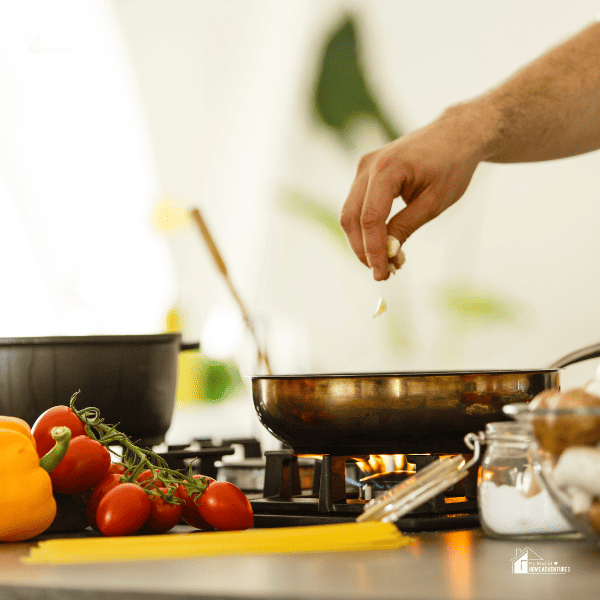
Meal Planning
Benefits of Meal Planning
Meal planning is a valuable practice that can save you both time and money in the kitchen. By taking the time to plan your meals, you can experience several benefits:
1. Save money: Meal planning helps you avoid unnecessary grocery shopping trips and impulse purchases, as you only buy the items you need for your planned meals. It also allows you to use sales and plan meals around affordable ingredients.
2. Reduce food waste: By planning your meals, you can better estimate the amount of food you need and avoid overbuying. This results in less food going to waste, saving you money and helping the environment.
3. Eat healthier: Meal planning allows you to incorporate a variety of nutritious meals into your diet. By planning, you can ensure you have the necessary ingredients for balanced meals and avoid relying on unhealthy take-out options.
4. Save time: Planning your meals eliminates spending time deciding what to cook each day. With a meal plan, you can streamline your grocery shopping and meal preparation, saving you precious time in the kitchen.
Tips for Effective Meal Planning
To make the most of meal planning, consider the following tips:
1. Set aside dedicated time: Designate a specific weekly time to plan your meals and create a grocery list. This can be as simple as 30 minutes on a Sunday afternoon.
2. Consider your schedule: Consider your weekly activities and commitments when planning your meals. Opt for quick and easy recipes on busy days and plan for leftovers when you have a lot going on.
3. Choose versatile ingredients: Look for ingredients that can be used in multiple recipes to minimize waste. For example, if one recipe calls for a certain vegetable, plan another recipe that uses the same vegetable to ensure it gets used up.
4. Make use of leftovers: Plan meals that can be repurposed or turned into new dishes with leftover ingredients. This helps reduce waste and saves you time and effort in the kitchen.
5. Embrace batch cooking: Consider preparing larger quantities of certain meals and freezing individual portions for later. This can save you time on busy days when you don't have time to cook from scratch.
6. Be flexible: While having a meal plan can be helpful, it's important to be open to changes and adjustments. Life happens, and sometimes you may need to swap meals or improvise with the ingredients you have on hand.
By implementing these tips and making meal planning a regular practice, you can save time and money in the kitchen while enjoying delicious and nutritious meals.

Batch Cooking
Finding time to cook healthy meals can be challenging in today's fast-paced world. However, with the practice of batch cooking, you can save both time and money in the kitchen while still enjoying nutritious meals.
Batch cooking involves preparing a large quantity of food at once and storing it for later use. Let's explore the advantages of batch cooking and some tips for success.
Advantages of Batch Cooking
- Time-saving: Batch cooking allows you to dedicate a few hours to cooking and preparing meals for the entire week. This means less time spent in the kitchen on a daily basis, giving you more time for other activities.
- Money-saving: When you plan and prepare meals in advance, you can buy ingredients in bulk, take advantage of sales, and reduce food waste. This can result in significant savings on your grocery bill.
- Healthier meals: With batch cooking, you have control over your meals' ingredients and portion sizes. This allows you to prioritize nutritious options and avoid relying on unhealthy takeout or convenience foods.
- Variety and convenience: Batch cooking doesn't mean eating the same meal every day. You can prepare a variety of dishes and mix and match them throughout the week. This adds excitement to your meals and eliminates the need for daily decision-making on what to cook.
Tips for Successful Batch Cooking
1. Plan ahead: Take some time to plan your meals for the week and make a shopping list. This will help you stay organized and ensure that you have all the necessary ingredients.
2. Invest in storage containers: Use airtight containers or freezer-safe bags to store your batch-cooked meals. Label them with the contents and date to make mealtime even easier.
3. Choose recipes wisely: Opt for recipes that can easily be doubled or tripled without sacrificing taste or quality. Consider recipes that can be easily frozen and reheated for future use.
4. Use kitchen tools efficiently: Utilize tools like slow cookers, pressure cookers, and food processors to streamline the cooking process. These appliances can help you save time and effort.
5. Rotate your meals: To avoid taste fatigue, rotate the meals you prepared throughout the week. This keeps your meals exciting and prevents boredom.
Batch cooking can revolutionize your approach to cooking, saving you time, money, and stress in the kitchen. By planning ahead, choosing nutritious recipes, and utilizing efficient cooking methods, you can enjoy healthy, homemade meals without spending excessive time each day. So why not try batch cooking and experience its many benefits for yourself?
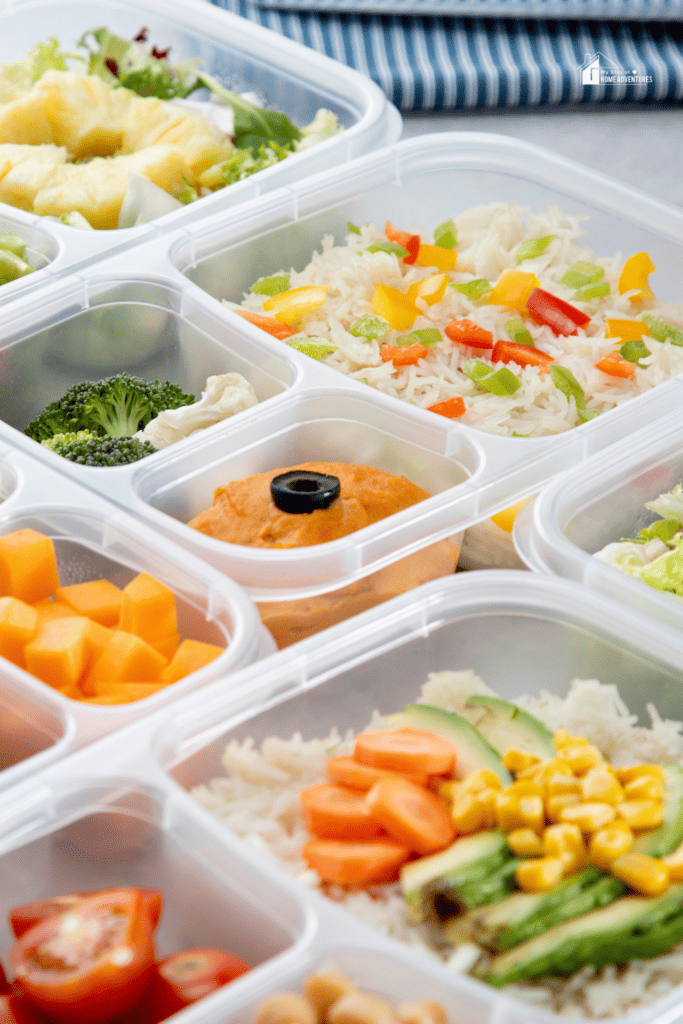
Kitchen Organization
An organized kitchen can have numerous benefits, including saving you time and money, making it easier to maintain, and enhancing the overall appearance of your home. When you have a well-organized kitchen, you can easily find what you need, avoid buying duplicates of items you already have, and minimize food waste.
An organized kitchen can also improve safety by reducing accidents and fire hazards. Spending a little time upfront to organize your kitchen can ultimately lead to a more efficient and enjoyable cooking experience.
Tips for Kitchen Organization
Here are some practical tips to help you organize your kitchen and reap the benefits:
- Divide and conquer your storage: Start by decluttering your kitchen cabinets and getting rid of any items that are damaged or no longer needed. Use dividers and storage containers to separate and organize your pots, pans, dishes, and utensils by size and type. This will make it easier to find what you need quickly.
- Maximize pantry and fridge space: Clear out your pantry, fridge, and freezer, and discard expired items. Use clear bins and labels to group similar items together and make them easily accessible. This will prevent overbuying and save you money on grocery shopping.
- Utilize vertical space: Use hooks or magnetic strips inside cabinet doors to hang frequently used utensils or small pots and pans. Use stackable shelves or hanging baskets to maximize storage space and keep your countertops clutter-free.
- Streamline meal planning: Plan your meals in advance and create a shopping list to avoid impulse purchases and reduce food waste. Consider investing in a whiteboard or chalkboard to keep track of weekly meal plans and grocery lists.
- Maintain cleanliness: Regularly clean your kitchen surfaces, appliances, and storage areas to minimize the time and effort required for deep cleaning. Use environmentally friendly cleaning products and keep a well-stocked supply of cleaning essentials within easy reach.
Remember, organizing your kitchen is an ongoing process. Regularly reassess your storage needs, declutter, and make necessary adjustments to maintain an organized and functional kitchen space.
By implementing these organization tips, you can save time and money, create a more efficient cooking environment, and enjoy the benefits of a well-organized kitchen. So, roll up your sleeves and transform your kitchen into a streamlined and productive space!
Using Leftovers
Leftovers can be a great way to save time and money in the kitchen. Instead of throwing out perfectly good food, get creative and repurpose your leftovers into new and delicious meals. Here are some creative ways to use leftovers:
- Repurpose Vegetables: Roasted, steamed, or sautéed leftover vegetables can be used in Mexican or Tex-Mex meals like tacos or burritos. They can also be added to egg dishes like omelets or scrambled eggs for an extra boost of nutrition.
- Utilize Grains: Leftover grains like rice or quinoa can stretch a meal and make it more filling. Mix them into soups or use them to make grain bowls with leftover veggies and protein.
- Transform Protein: Leftover proteins like chicken, steak, or tofu can be diced up and added to various dishes. Use them in stir-fries, pasta sauces, or as toppings for pizzas.
- Get Creative with Sauces: Instead of freezing leftover sauces, try using them as dips for veggies, toppings for toast or bruschetta, or as a different sauce for pizzas or flatbreads.
- Sweeten with Fruit: If you have leftover fruit, mix it with a pinch of sugar and use it as a topping for yogurt or add it to your breakfast cereal.
Tips for Maximizing Leftovers
To maximize your use of leftovers, consider the following tips:
- Plan Meals with Leftovers in Mind: When meal planning, think about what leftovers can become. Prepare extra vegetables, grains, and proteins to use in future meals.
- Store Leftovers Properly: Use well-sealed containers or wrap leftover food tightly to maintain freshness. Label and date leftovers to avoid confusion.
- Freeze Leftovers: If your fridge is overflowing, freeze leftovers for later use. This allows you to extend the life of your leftovers and have meals ready to go on busy days.
- Get Creative: Don't be afraid to get creative with your leftovers. Experiment with new flavor combinations and try out different recipes to transform your leftovers into exciting dishes.
Using leftovers saves you time and money and helps reduce food waste. By repurposing your leftovers, you can enjoy new meals without feeling like you're eating the same thing over and over again. Get creative and make the most of your leftovers to create delicious and satisfying meals.
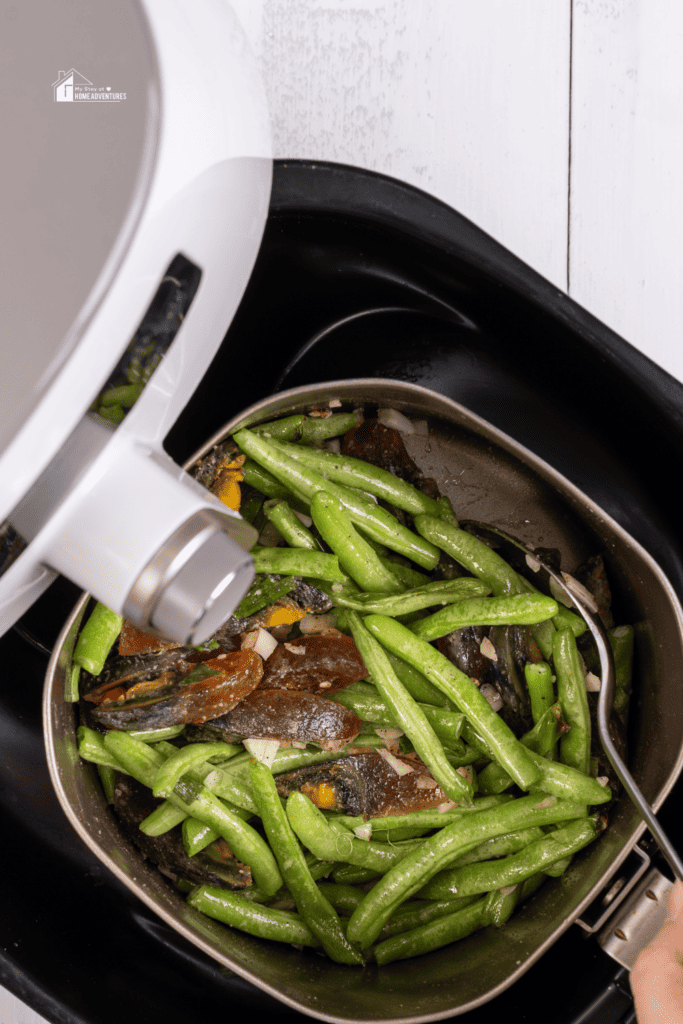
Using Time-Saving Appliances
Finding ways to save time and money in the kitchen is essential. Fortunately, several time-saving appliances can help make cooking easier and more efficient. Utilizing these appliances and implementing smart cooking strategies can streamline your meal preparation process and allow you to enjoy more free time. Here are some must-have time-saving appliances for the kitchen:
Must-Have Time-Saving Appliances for the Kitchen
- Food Processor: A food processor is a versatile kitchen tool that saves you time. It can be used for chopping, slicing, grating, and even pureeing ingredients. Whether you're making sauces, dips, or chopping veggies, a food processor can make the process quick and efficient. Consider investing in a high-quality food processor with interchangeable disks and blades for maximum versatility.
- Blender: A blender is another essential kitchen appliance that offers a multitude of uses. From blending smoothies to making soups, dressings, and sauces, a blender can help you save time and create various dishes. Look for a blender with a powerful motor and different accessory options for more flexibility in the kitchen.
- Immersion Blender: An immersion blender is a compact and convenient tool that allows you to blend ingredients directly in your pot or container. This eliminates the need for transferring hot ingredients to a blender, saving time and reducing cleanup. An immersion blender is especially handy for making creamy soups and purees.
For a detailed comparison of these appliances, refer to the table below:
| Appliance | Food Processor | Blender | Immersion Blender |
|---|---|---|---|
| Function | Chopping, slicing, grating, pureeing | Blending, pureeing, sauce making | Blending, pureeing directly in the pot |
| Cleaning | Dishwasher-safe parts, easy to clean | Dishwasher-safe parts, easy to clean | Detachable blade for easy cleaning |
| Features | Interchangeable disks and blades | Variable speed settings, different accessories | Variable speed settings |
| Recommended Brand | Cuisinart | Vitamix | Nutribullet |
Tips for Efficiently Using Time-Saving Appliances
To make the most out of your time-saving appliances, consider the following tips:
- Plan ahead: In advance, meal planning and grocery shopping can save valuable time. Take inventory of your kitchen, make a list of necessary ingredients, and plan your meals for the week.
- Prep in advance: Set aside some time each week to prep ingredients in advance. Chop vegetables, portion out snacks, and prepare some meal components, such as sauces or dressings. This way, you'll have everything ready to go when it's time to cook.
- Keep a clean and organized workspace: Maintaining a clean and well-organized work area will help you work more efficiently. Keep your countertops, appliances, and utensils clean and easily accessible. Invest in good-quality utensils that you use frequently and store them within reach.
By utilizing these time-saving appliances and implementing smart cooking strategies, you can save valuable time in the kitchen and enjoy more free time for yourself.
Grocery Shopping Tips
Regarding grocery shopping, finding ways to save time and money can significantly affect your overall budget. By implementing some smart strategies, you can streamline your kitchen routines and keep more money in your pocket. Here are some tips to help you save time and money in the kitchen:
- Create a meal plan: Planning your meals in advance can save you both time and money. Take some time each week to plan your meals and create a shopping list based on your recipes. This way, you can avoid impulsive purchases and ensure you have all the necessary ingredients.
- Shop with a list: Always go grocery shopping with a list to avoid unnecessary purchases. Stick to your list and resist the temptation to add items that are not essential. This can help you stay within your budget and avoid wasted food.
- Compare prices: Take the time to compare prices of similar items from different brands or stores. Look for sales and discounts, and consider buying generic or store-brand products, which are often cheaper than name brands.
- Buy in bulk: Purchasing non-perishable items in bulk can save you money in the long run. Look for bulk bins or larger packages of products that you frequently use. However, make sure to compare the price per unit or ounce to ensure that you are getting the best deal.
- Stick to the perimeter: The grocery store's perimeter usually contains fresh produce, meats, and dairy products. Focus on these areas as they offer healthier options and tend to be less expensive than processed or packaged foods in the center aisles.
- Use coupons and loyalty programs: Take advantage of coupons and loyalty programs offered by grocery stores—clip coupons or digital coupons from apps to save money on purchases. Joining loyalty programs can also earn you discounts and rewards in the long run.
- Avoid shopping on an empty stomach: Shopping on an empty stomach can lead to impulse purchases of unhealthy snacks or unnecessary items. Eat a snack or meal before heading to the store to make better spending decisions.
- Avoid food waste: Reduce food waste by properly storing leftovers, using ingredients before they spoil, and utilizing freezer storage for food you can't consume immediately. Planning meals based on what you already have in your pantry can also help reduce waste.
By implementing these strategies, you can save both time and money in the kitchen. Remember to plan, compare prices, and stick to your budget to maximize your grocery shopping experience.

Cooking Hacks
Time-Saving Cooking Hacks for the Kitchen
When it comes to cooking, saving time and money in the kitchen is a goal for many people. Fortunately, plenty of hacks and tips can help you streamline your cooking processes and make the most out of your time and ingredients.
Here are a few time-saving cooking hacks that can help you save time and money in the kitchen:
- Meal Planning and Grocery Shopping: Take some time on the weekend to plan your meals for the week and make a grocery list. This will help you avoid last-minute trips to the store and ensure you have all the ingredients you need.
- Prep Work: Spend some time prepping your produce for the week by washing, peeling, and chopping them in advance. This way, you'll have everything ready to go when it's time to cook, saving you valuable time during the week.
- Smart Storage: Store your kitchen staples like flour, sugar, and spices in airtight containers to keep them fresh for longer. This will prevent you from constantly running out to buy new ingredients.
- Efficient Clean-Up: Keep your work area clean and organized for better efficiency. Before you start cooking, ensure your countertops, appliances, and utensils are clean and ready to use. Have a wet and dry towel nearby for wiping purposes and a trash can or dump bowl in an accessible spot.
- Utensil Placement: Strategize where you place your most frequently used utensils. Keep the ones you use the most, like spoons, whisks, and spatulas, by the stove for easy access. Use fun and funky pieces of pottery or jars to store long-handled items near your cooking area.
- Convenient Cookware Storage: Arrange your cupboards and storage spaces so that larger items are easily accessible and not hidden behind others. Keep your most frequently used pots, pans, and appliances within reach for quick and efficient cooking.
- Meal Prep Utensils: Invest in a few good-quality utensils that you use frequently and store them nearby. This will save you time from searching through multiple drawers.
These time-saving cooking hacks can help you be more efficient in the kitchen, save money by preventing food waste, and give you more time to enjoy your meals with family and friends.
Incorporating these tips into your cooking routine will help you streamline your processes and make the most out of your time and ingredients.
conclusion
Saving time and money in the kitchen is a goal that many people strive to achieve. By implementing some of the strategies mentioned above, you can make your meals more cost-effective and efficient. The key is to find a balance between convenience and savings.
By buying in bulk, preparing meals ahead of time, and utilizing leftovers, you can stretch your food and reduce waste. Additionally, incorporating cost-effective ingredients such as canned goods and food stretchers can help make your meals more substantial without breaking the bank.
Don't be afraid to get creative and repurpose ingredients to keep your family interested in the meals you prepare at home.
In terms of saving time, finding shortcuts and using time-saving appliances can be a game-changer. Investing in a slow cooker or Instant Pot can help you prepare delicious meals with minimal effort.
Utilizing make-ahead freezer meals can also be a lifesaver on busy days when you don't have the time or energy to cook.
Remember, the goal is to find strategies that work for you and your family's preferences and schedules. It may take some trial and error, but implementing these tips can make the most of your time and money in the kitchen.


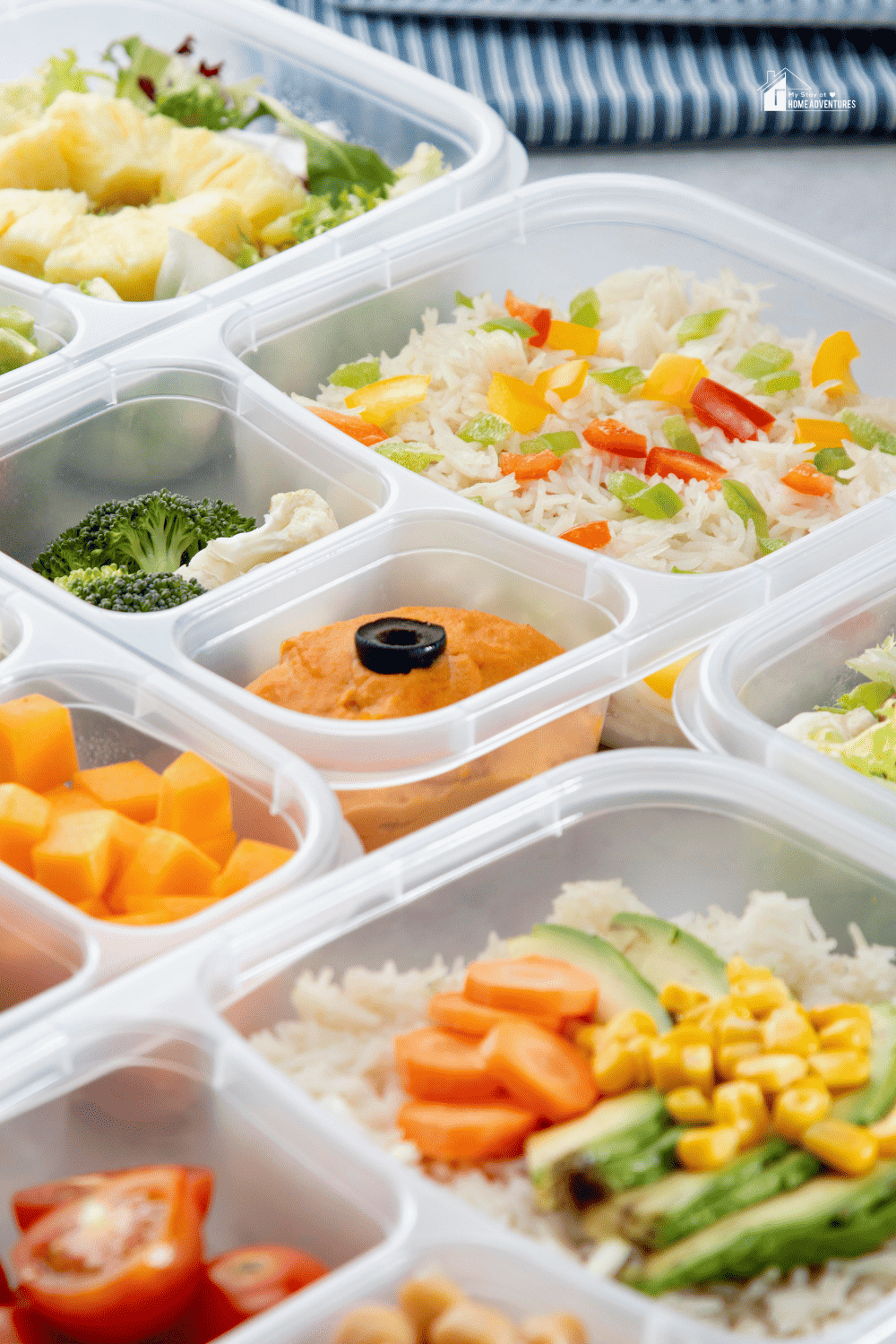
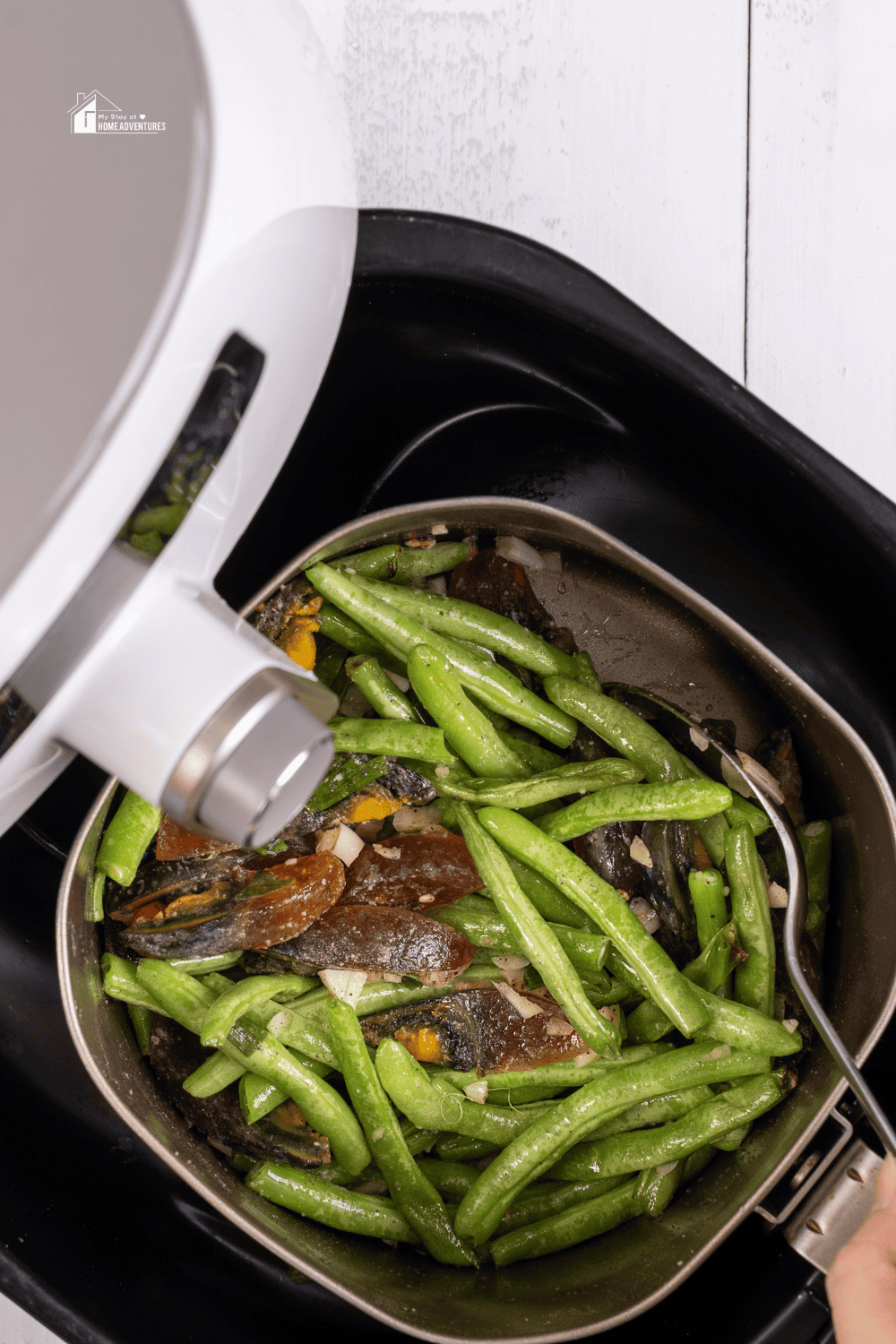

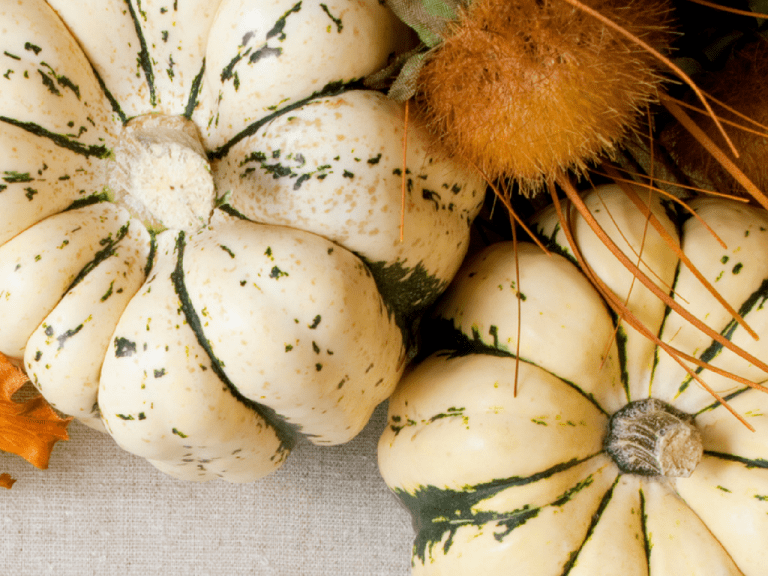





7 Comments